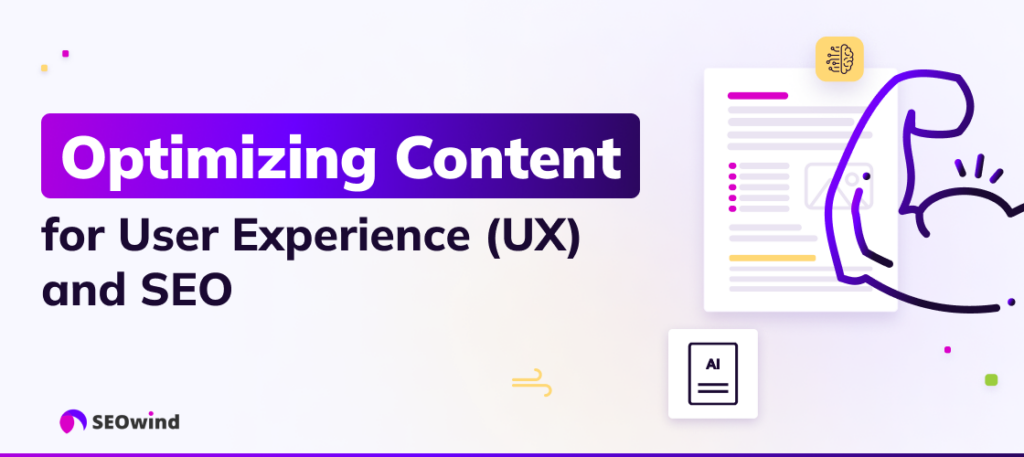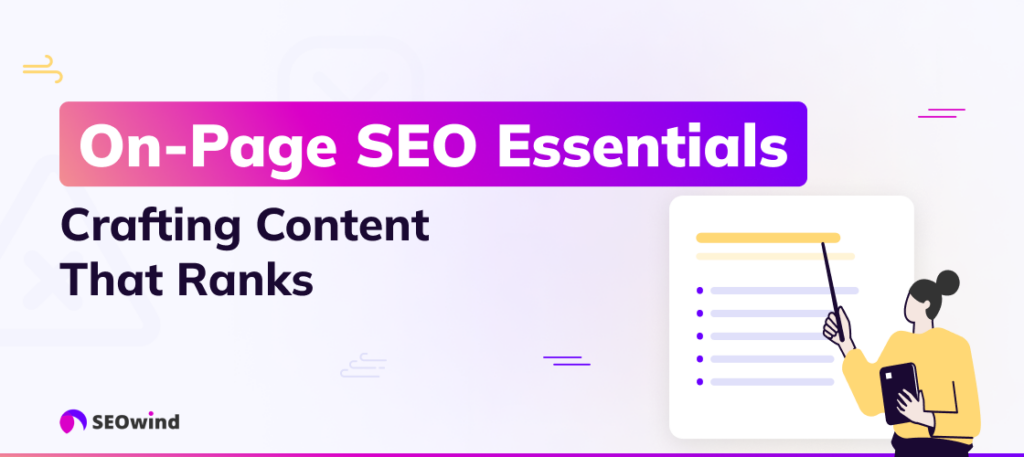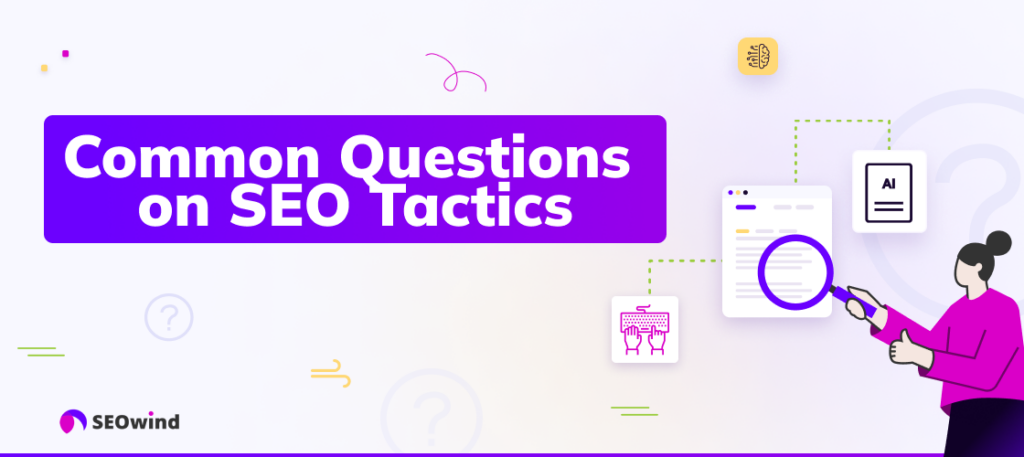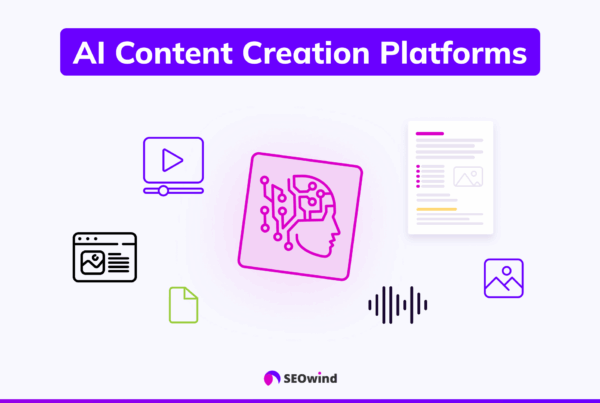Are you ready to take your website’s visibility to new heights? When it comes to search engine optimization (SEO), staying ahead of the curve is crucial. In 2024, the digital landscape continues to shift, presenting both challenges and opportunities for savvy marketers and website owners.
Did you know that Google possesses nearly 82% of the global search engine market (Source: Statista). This staggering statistic underscores the importance of mastering SEO tactics to ensure your content reaches its intended audience. But here’s the kicker: less than 1% of searchers click on the second page of Google results. That’s right – if you’re not on the first page, you might as well be invisible.
In this comprehensive guide, I’ll walk you through cutting-edge SEO strategies that will help you climb the rankings and capture that coveted first-page real estate. From advanced keyword targeting to technical SEO wizardry, we’ll explore the tactics that separate the top performers from the rest of the pack.
Finding and Targeting High-Value Keywords

The foundation of any successful SEO strategy lies in identifying and targeting the right keywords. In 2024, this process has become more sophisticated than ever before.
1. Analyzing Competitors’ Keywords and Strategies
One of the most effective ways to jumpstart your keyword research is by peeking over the digital fence at your competitors. By analyzing their keyword strategies, you can gain valuable insights into what’s working in your niche and identify potential gaps in your own approach.
Start by using tools like SEMrush or Ahrefs to conduct a thorough competitor analysis. Look for keywords that your competitors rank for but you don’t. Pay special attention to those with high search volume and moderate competition, as these could be low-hanging fruit.
Don’t just stop at identifying keywords, though. Analyze the content that ranks for these terms. What makes it successful? Is it the depth of information, the use of multimedia, or the way it’s structured? Use these insights to inform your own content creation strategy.
2. The Importance of Long-Tail Keywords for Niche Targeting
While high-volume keywords might seem tempting, don’t overlook the power of long-tail keywords. These longer, more specific phrases often have lower search volumes but can be incredibly valuable for niche targeting.
Long-tail keywords typically have less competition, making it easier for you to rank. They also tend to have higher conversion rates because they capture users with more specific intent. For example, someone searching for “best waterproof hiking boots for wide feet” is likely closer to making a purchase than someone simply searching for “hiking boots.”
To find valuable long-tail keywords, use tools like Answer the Public or look at the “People also ask” section in Google search results. These can provide a goldmine of long-tail keyword ideas that closely align with user intent.
3. Utilizing Latent Semantic Indexing (LSI) for Enhanced Relevance
Latent Semantic Indexing (LSI) is a technique used by search engines to understand the context and relationships between words. Incorporating LSI keywords into your content can enhance its relevance and improve your chances of ranking for related searches.
To find LSI keywords, look at the related searches at the bottom of Google’s search results page. You can also use tools like LSIGraph or even Google’s Keyword Planner to identify semantically related terms. Incorporate these naturally throughout your content to help search engines recognize the depth and breadth of your topic coverage.
4. Utilizing Advanced Keyword Research Tools
In 2024, relying solely on basic keyword research tools won’t cut it. To keep ahead of the competition, you need to leverage advanced tools that provide deeper insights and more accurate data. Some powerful options include:
- Google Search Console: For understanding which queries are actually driving traffic to your site
- Keyword.io: Great for finding long-tail keywords and questions
- Moz Keyword Explorer: Offers keyword difficulty scores and search engine results page (SERP) analysis
- SpyFu: Excellent for competitive keyword research
Remember, the goal isn’t just to find keywords with high search volume. You’re looking for the sweet spot: keywords with decent search volume, manageable competition, and high relevance to your target audience.
5. Use Creative Seed Keywords
Sometimes, the best keyword opportunities come from thinking outside the box. Instead of always starting with obvious industry terms, use creative seed keywords to uncover hidden gems.
Consider related topics, analogies, or even pop culture references that might be relevant to your niche. For example, if you’re in the fitness industry, you might explore keywords related to popular TV shows about weight loss or trending diets.
Another creative approach is to look at keywords from adjacent industries. If you’re selling productivity software, you might find valuable keywords by exploring terms used in time management or personal development niches.
By employing these advanced keyword targeting strategies, you’ll be well on your way to uncovering high-value keywords that can propel your content to the top of search engine results pages. Remember, Google uses over 200 ranking factors in its search algorithm, and choosing the right keywords is just the beginning. In the following sections, we’ll explore how to create content that targets these keywords and provides exceptional value to your audience.
Create E-E-A-T content

Creating Experience, Expertise, Authoritativeness, and Trustworthiness (E-E-A-T) content has become more crucial than ever. As we dive into advanced SEO strategies for 2024, it’s essential to understand that quality content is the cornerstone of successful search engine optimization techniques.
6. Write for humans first and search engines second
One of the most critical SEO optimization tips I can offer is prioritizing your human audience over search engine algorithms. While focusing solely on keywords and technical aspects is tempting, remember that engaging, valuable content drives traffic and conversions.
Consider this startling statistic: 96.55% of content gets no traffic from Google (Source: Ahrefs). To separate yourself from the pack, your content needs to resonate with real people. Write in a natural, conversational tone that addresses your readers’ needs and questions. By doing so, you’ll improve user engagement and send positive signals to search engines about the quality of your content.
7. Create Comprehensive Content That Addresses User Intent
One of the most effective SEO marketing techniques is creating comprehensive content that thoroughly addresses user intent. This approach aligns perfectly with the goals of SEOwind, an AI-powered tool designed to help create high-quality, research-based content that drives traffic.
Here’s a compelling reason to invest in comprehensive content: Content over 3,000 words wins 3x more traffic than average-length content of 1.4k words. This demonstrates the value of creating detailed, authoritative assets that cover all aspects of a topic.
To create such content:
- Conduct thorough research on your topic
- Identify and answer common questions your audience might have
- Provide actionable insights and practical examples
- Use data and statistics to support your points
- Include relevant visuals to enhance understanding
By addressing user intent comprehensively, you’re more likely to satisfy searchers and keep them on your page longer, which are positive signals for search engines.
8. Crafting Engaging and Informative Content
Engagement is crucial for SEO success. Your content should not only inform but also captivate your audience. Here are some advanced SEO strategies to make your content more engaging:
- Use storytelling techniques to illustrate complex concepts
- Incorporate interactive elements like quizzes or calculators
- Break up text with subheadings, bullet points, and images
- Include real-life examples and case studies
- Pose questions to encourage reader reflection
SEOwind’s AI-powered content creation process can help you craft engaging content by providing comprehensive outlines and briefs based on in-depth research. This ensures that your content is informative and structured in a way that keeps readers interested.
9. Show Topical Expertise
Demonstrating topical expertise is crucial for establishing your site as an authoritative source in your niche. This is where SEOwind’s CyborgMethod™ comes into play, combining human insight with AI capabilities to create content that truly showcases expertise.
To exhibit topical expertise:
- Dive deep into specific subtopics within your niche
- Reference and link to authoritative sources
- Share original research or data when possible
- Provide unique insights based on your experience
- Update your content regularly to reflect the latest developments in your field
By leveraging SEOwind’s multi-model AI approach, which utilizes advanced models like Claude 3.5 and GPT-4, you ensure that your content is comprehensive, up-to-date, and reflective of true expertise in your field.
Remember, creating EEAT content is not just about following a set of rules; it’s about consistently delivering value to your audience. By focusing on these aspects of content creation, you’ll not only improve your SEO performance but also build a loyal readership that trusts and relies on your content for information and guidance.
Optimizing Content for User Experience (UX) and SEO

Focusing on optimizing content for both user experience (UX) and search engines enhances your website’s visibility and ensures that visitors have a positive interaction with your content. Let’s explore some powerful SEO optimization tips and techniques that can significantly boost your content’s performance.
10. Improve existing content & add missing subtopics
One of the most effective SEO marketing techniques is regularly auditing and improving your existing content. Start by identifying your top-performing pages and those that have potential but aren’t ranking as well as they could. Then, follow these steps:
- Analyze keyword gaps and incorporate relevant terms you might have missed.
- Expand on topics that need more depth or explanation.
- Update outdated information with current data and trends.
- Add new sections to cover related subtopics your audience might be interested in.
By enhancing your existing content, you’re signaling to search engines that your pages are fresh and comprehensive, which can lead to improved rankings.
11. Incorporate Visuals: Images, Videos, and Infographics
Visual content is a powerful tool in your SEO arsenal. Not only does it break up text and make your content more engaging, it also provides additional opportunities for optimization. Here are some SEO techniques and tools to leverage visuals:
- Use descriptive, keyword-rich file names for images.
- Add alt text to images, incorporating relevant keywords naturally.
- Create custom infographics that summarize key points in your content.
- Embed relevant videos to increase time on page and provide value to users.
- Optimize video titles and descriptions with target keywords when hosting on platforms like YouTube.
Remember, visual content can significantly enhance the user experience, leading to longer visit durations and potentially improved search rankings.
12. Structure Content with Headers for Easier Readability
Proper content structure is crucial for both UX and SEO. Use headers (H1, H2, H3, etc.) to create a clear hierarchy and make your content scannable. This practice helps readers quickly find the information they’re looking for and assists search engines in understanding the structure of your content.
Consider these tips:
- Use your main keyword in the H1 tag (usually your title).
- Include secondary keywords in H2 and H3 tags where relevant.
- Keep headers concise and descriptive.
- Ensure a logical flow from one section to the next.
Well-structured content improves readability and enhances your chances of appearing in featured snippets on search engine results pages.
13. Elevate Your Content With Original Research and Data
One of the most advanced SEO strategies is incorporating original research and data into your content. This approach can significantly boost your authority and increase the likelihood of earning backlinks. Here’s how to implement this technique:
- Conduct surveys or experiments within your industry.
- Analyze your own company data for exciting trends or insights.
- Collaborate with academic institutions or industry experts for unique studies.
- Present your findings in easy-to-understand formats like charts or infographics.
Original research sets your content apart and provides value that other sites will want to reference, potentially leading to high-quality backlinks.
14. Link Out to Authority Sites
While it may seem counterintuitive, linking to authoritative external sources can benefit your SEO. This practice:
- Adds credibility to your content.
- Provides additional value to your readers.
- Signals to search engines that your content is well-researched and trustworthy.
When implementing this strategy, ensure that:
- The external links are relevant to your content.
- You’re linking to reputable, high-authority sites.
- The links open in a new tab to keep users on your site.
For example, consider this compelling statistic: SEO drives 1,000%+ more traffic than organic social media. By linking to authoritative sources, you’re providing valuable information to your readers and enhancing your content’s credibility.
By implementing these SEO optimization tips and search engine optimization techniques, you’ll create content that ranks well and provides an excellent user experience. Remember, the goal is to create valuable, user-centric content that naturally aligns with SEO best practices. This approach will help you build a strong online presence and drive sustainable organic traffic to your site.
On-Page SEO Essentials: Crafting Content That Ranks

On-page SEO remains a critical component of any successful strategy. As we review advanced SEO strategies for 2024, it’s crucial to understand and implement these on-page elements effectively. It’s time to explore some essential ranking tactics that will help your content climb SERPs.
15. Optimize Title Tags and Meta Descriptions for Maximum Click-Through Rate
Title tags and meta descriptions are your content’s first impression in the SERPs. Optimizing these elements is one of the most impactful SEO tips you can implement. Here’s why it matters: the top three Google search results get 54.4% of all clicks. To increase your chances of landing in those coveted top spots, follow these guidelines:
- Include your primary keyword in the title tag, preferably near the beginning.
- Keep title tags under 60 characters to ensure they display fully in search results.
- Craft compelling meta descriptions that accurately summarize your content and include a call-to-action.
- Write meta descriptions between 150-160 characters.
- Use power words and emotional triggers to increase click-through rates.
Remember, while keywords are important, your primary goal is to entice users to click. Balance SEO requirements with creating titles and descriptions that genuinely appeal to your target audience.
16. Use Proper Heading Tags in Structuring Content
Properly using heading tags (H1, H2, H3, etc.) is a fundamental SEO technique that helps users and search engines understand your content’s structure. Here’s how to implement this effectively:
- Use only one H1 tag per page, typically for your main title.
- Structure your content logically with H2s for main sections and H3s for subsections.
- Include relevant keywords in your headings, but prioritize clarity and UX.
- Ensure your headings accurately describe the content that follows.
By implementing a clear heading structure, you improve readability and increase the chances of your content appearing in featured snippets or answering specific user queries directly in the SERPs.
17. Leverage Rich Snippets for Enhanced SERP Presence
Rich snippets are a powerful way to stand out in the search results and increase click-through rates. These enhanced search results provide additional information directly in the SERPs, making your listing more attractive and informative. Here are some SEO techniques and tools to implement rich snippets:
- Use schema markup to provide structured data about your content.
- Implement review ratings for product pages or testimonials.
- Add recipe information for culinary content.
- Include event details for upcoming webinars or conferences.
- Utilize FAQ schema to display frequently asked questions directly in search results.
By leveraging rich snippets, your content has the best chance to stand out in a crowded SERP landscape. This is particularly important when you consider that 75% of users never go past the first page of search results. Rich snippets can help you capture attention and drive clicks even if you’re not in the top positions.
To implement these advanced SEO strategies effectively, consider using SEO tools like Google’s Structured Data Testing Tool or Schema.org’s markup validator. These resources can help ensure your rich snippets are correctly implemented and eligible for display in search results.
Focusing on these on-page SEO essentials lays a solid foundation for your content to rank well in search engines. While these technical aspects are crucial, they should always complement high-quality, valuable content that addresses user intent. Combining strong on-page optimization and exceptional content is a powerful formula for SEO success in 2024 and beyond.
Use AI in Your Content Creation Process

AI has emerged as a game-changing tool for content creators and marketers. By leveraging AI in your content creation process, you can significantly enhance your SEO tactics and implement advanced SEO strategies more efficiently. Let’s explore how you can use AI to supercharge your content creation and boost your rankings.
18. Use the CyborgMethod™
One of the most innovative approaches to content creation is the CyborgMethod™, a concept pioneered by SEOwind. This method combines the best human and AI capabilities, resulting in high-quality, SEO-optimized content that resonates with search engines and readers.
The CyborgMethod™ encourages collaboration between humans and AI, allowing you to:
- Leverage AI for data analysis and initial content generation
- Apply human creativity and expertise to refine and personalize the content
- Ensure that the final product maintains a natural, engaging tone while incorporating SEO best practices
By adopting this approach, you can create content that is not only optimized for search engines but also genuinely valuable to your target audience. This synergy between human insight and AI efficiency is a powerful ranking tactic that can set your content apart in competitive SERPs.
19. Create content briefs
Content briefs are the backbone of any successful SEO content strategy. With AI tools like SEOwind, you can streamline the process of creating comprehensive content briefs that guide your writing process. Here’s how AI can enhance your brief creation:
- Automatically gather relevant keywords and topics based on your target audience and competitors
- Analyze top-ranking content to identify key themes and structures
- Generate outlines that cover all necessary subtopics
- Suggest potential headings and subheadings that incorporate target keywords naturally
By using AI to create detailed content briefs, you ensure that your content addresses all relevant aspects of a topic, improving your chances of ranking well for multiple related queries.
20. Create AI articles based on data and research
One of the most powerful SEO techniques and tools available today is the ability to create AI-generated articles based on solid data and research. SEOwind’s AI writer excels in this area by:
- Conducting in-depth content and keyword research to identify valuable topics and angles
- Analyzing top-performing content in your niche to understand what resonates with readers and search engines
- Generating comprehensive, well-structured articles that incorporate SEO best practices
- Ensuring that the content is factually accurate and up-to-date by referencing reliable sources
The result is high-quality AI content that drives traffic by being comprehensive and optimized for search engines. This approach allows you to produce more content in less time, giving you a competitive edge in your content marketing efforts.
21. Update content
Keeping your content fresh and relevant is a crucial SEO tactic, and AI can significantly streamline this process. With SEOwind’s AI-powered content updating capabilities, you can:
- Automatically identify outdated content on your site
- Analyze current search trends and competitor content to find gaps in your existing articles
- Generate suggestions for new sections, updated statistics, or additional information to enhance your content
- Rewrite portions of your content to improve relevance and readability while maintaining SEO optimization
By regularly updating your content with the help of AI, you signal to search engines that your site is active and providing current, valuable information to users. This can positively impact your rankings and help maintain your position in SERPs over time.
Incorporating AI into your content creation process through tools like SEOwind can revolutionize your SEO strategy. By leveraging the power of AI for research, brief creation, article writing, and content updates, you can produce more high-quality, optimized content that drives traffic and improves your search engine rankings. The goal is to use AI as a powerful assistant in your content creation process, always ensuring that the final product aligns with your brand voice and meets the needs of your target audience.
Ensure Your Site is Search Engine Friendly [Technical SEO]
![Ensure Your Site is Search Engine Friendly [Technical SEO]](https://seowind.io/wp-content/uploads/2024/09/Bsics-2-1024x457.png)
Technical SEO forms the backbone of any successful search engine optimization strategy. As we delve into advanced SEO strategies for 2024, it’s crucial to understand that a search engine-friendly website is not just about content—it’s about providing a seamless, secure, and swift user experience. Let’s explore some essential SEO optimization tips and search engine optimization techniques that will help your site climb the rankings.
22. Site Speed Optimization Techniques
Site speed is a critical factor for the user experience and search engine rankings. Here are some SEO techniques and tools to boost your site’s speed:
- Compress and optimize images without sacrificing quality
- Leverage browser caching to store static files
- Minify CSS, JavaScript, and HTML
- Use a Content Delivery Network (CDN) for faster global access
- Implement lazy loading for images and videos
Remember, every second counts. A faster site improves user satisfaction and contributes to better search engine performance.
23. Optimize for Mobile
With mobile devices dominating internet usage, mobile optimization is essential. Here are some SEO marketing techniques for mobile optimization:
- Implement responsive design to ensure your site looks great on all devices
- Use larger font sizes and button sizes for easy touch navigation
- Eliminate pop-ups that might disrupt mobile user experience
- Optimize page load times specifically for mobile networks
- Use Accelerated Mobile Pages (AMP) for lightning-fast mobile loading
Mobile optimization is crucial, especially considering that 68% of all generated website traffic is sourced from both organic and paid search (Source: BrightEdge). A significant portion of this traffic comes from mobile devices, making mobile optimization a critical factor in capturing and retaining visitors.
24. Secure Your Website with HTTPS
Security is a top priority for both users and search engines. Implementing HTTPS is one of the most critical SEO optimization tips you can follow. Here’s why it matters:
- HTTPS encrypts data transfer between the user’s browser and your server
- It builds trust with your visitors, potentially increasing conversions
- HTTPS is a known ranking factor for Google
- It’s essential for e-commerce sites that handle sensitive information
Transitioning to HTTPS is a straightforward process that can significantly impact your site’s trustworthiness and search engine performance.
25. Secure Socket Layer (SSL) Implementation for Trust and Security
SSL certificates are the backbone of HTTPS. Implementing SSL is a critical step in securing your website and improving its search engine friendliness. Here’s what you need to know:
- Choose the correct type of SSL certificate for your needs (e.g., single domain, wildcard, or multi-domain)
- Ensure the proper installation and configuration of your SSL certificate
- Update internal links to HTTPS to avoid mixed content warnings
- Set up 301 redirects from HTTP to HTTPS versions of your pages
- Update your sitemap and robots.txt file to reflect the HTTPS versions of your URLs
Proper SSL implementation secures your site and signals to search engines that your site is trustworthy and up-to-date with current web standards.
26. Optimize for the Core Web Vitals
Core Web Vitals are specific factors that Google considers important to a webpage’s overall user experience. Optimizing for these metrics is one of the most advanced SEO strategies you can implement. Focus on these three key aspects:
- Largest Contentful Paint (LCP): Optimize the loading time of your main content
- First Input Delay (FID): Improve interactivity by minimizing processing time
- Cumulative Layout Shift (CLS): Ensure visual stability by preventing unexpected layout shifts
To optimize for Core Web Vitals:
- Use tools like Google PageSpeed Insights to identify areas for improvement
- Optimize images and videos to reduce load times
- Minimize the impact of third-party scripts
- Improve server response times
- Implement effective caching strategies
By focusing on these technical SEO elements, you’ll improve your site’s search engine friendliness and deliver a better overall user experience. This holistic approach to SEO can lead to improved rankings, increased traffic, and higher user satisfaction.
Remember, technical SEO is an ongoing process. Regularly audit your site’s performance and stay updated with the latest SEO techniques and tools to ensure your website remains competitive.
Build an Effective Link Building Strategy

Link-building remains a cornerstone of SEO success. Let’s explore how to build an effective link-building strategy that aligns with current SEO techniques and marketing tactics.
27. Earn Backlinks With High-Quality Content
Creating content that naturally attracts backlinks is the foundation of any successful SEO content marketing strategy. Here’s how to make your content link-worthy:
- Develop comprehensive, in-depth guides that serve as go-to resources in your industry
- Create original research, surveys, or studies that provide unique insights
- Design infographics or data visualizations that simplify complex information
- Produce thought leadership that offers fresh perspectives on industry trends
- Craft engaging, shareable content like listicles or how-to articles
Your focus should be on creating content so valuable that other websites naturally want to link to it as a reference.
28. Avoid Common Link Building Mistakes and Penalties
While building links, it’s crucial to adhere to best practices to avoid penalties. Here are some common pitfalls to steer clear of:
- Buying links or participating in link schemes
- Excessive use of exact-match anchor text
- Acquiring links from low-quality or irrelevant websites
- Using automated link-building tools or services
- Neglecting the diversity of your link profile
Instead, focus on natural link acquisition through genuine relationships and high-quality content creation.
29. Guest Blogging and Content Syndication Strategies
Guest blogging and content syndication remain effective SEO marketing tactics when done correctly. Here’s how to maximize their impact:
- Identify reputable websites in your niche that accept guest posts
- Pitch unique, valuable content ideas that align with the host site’s audience
- Include relevant, contextual links back to your website within the guest post
- Syndicate your content on platforms like Medium or LinkedIn, using canonical tags to avoid duplicate content issues
- Engage with the community on these platforms to increase visibility and potential link opportunities
You’re trying to provide value to the host site’s audience while subtly promoting your own expertise.
30. Take Advantage of Broken Link Building Opportunities
Broken link building is an often overlooked yet highly effective strategy. Here’s how to implement it:
- Use tools like Ahrefs or Screaming Frog to identify broken links on relevant websites
- Create content that could serve as a replacement for the broken link
- Reach out to the website owner, informing them of the broken link and suggesting your content as a replacement
- Offer additional value by pointing out other broken links you’ve found on their site
This approach helps you gain backlinks and builds goodwill with other website owners.
31. Capitalize on Competitor Backlinks Analysis
Analyzing your competitors’ backlink profiles can reveal valuable opportunities. Here’s how to leverage this information:
- Use SEO tools to identify your competitors’ top-performing pages in terms of backlinks
- Analyze the types of content that are attracting links in your niche
- Look for websites that link to multiple competitors but not to you
- Create content that’s even better than what your competitors have produced
- Reach out to the linking websites, showcasing your superior content as a potential additional resource
By understanding where your competitors are getting their links, you can uncover new opportunities and gaps in your link-building strategy.
Implementing these advanced link-building SEO strategies can significantly boost your website’s authority and search engine rankings. Remember, the key to successful link-building in 2024 and beyond is to create valuable, shareable content and build genuine relationships within your industry. By combining these tactics with other SEO marketing strategies, you’ll be well-positioned to improve your site’s visibility and organic traffic.
Leverage Local SEO for Businesses with Physical Locations

In 2024, local SEO remains crucial for businesses with physical locations. With the proper optimization techniques, companies can significantly improve their visibility in local search results and attract more foot traffic.
32. Optimize Google My Business Listings
Google My Business (GMB) is one of the most powerful SEO techniques and tools for local businesses. Here’s how to optimize your GMB listing for maximum impact:
- Claim and verify your GMB listing if you haven’t already
- Ensure all information is accurate, complete, and up-to-date, including business name, address, phone number, website, and hours of operation
- Choose the most relevant primary and secondary categories for your business
- Add high-quality photos and videos that showcase your business, products, or services
- Utilize GMB posts to share updates, offers, and events regularly
- Enable and respond to messages through your GMB listing to improve engagement
- Add products or services to your listing, complete with descriptions and prices if applicable
- Use the Q&A feature to preemptively answer common customer questions
Remember, your GMB listing is often the first point of contact between your business and potential customers in local searches. Keeping it optimized and active is crucial for local SEO success.
33. Strategies for Gaining Local Reviews and Citations
Reviews and citations play a significant role in local search rankings. Here are some advanced SEO strategies to boost your local presence:
- Encourage satisfied customers to leave reviews on your GMB listing and other relevant platforms
- Implement a review management system to monitor and respond to all reviews promptly and professionally
- Create a simple process for customers to leave reviews, such as providing direct links or QR codes
- Develop a strategy for handling negative reviews constructively and turning them into opportunities for improvement
- Build local citations by ensuring your business is listed in relevant local directories, chambers of commerce, and industry-specific platforms
- Maintain consistency in your Name, Address, Phone number (NAP) information across all online platforms
- Leverage local influencers or bloggers to create content about your business, potentially earning valuable backlinks and mentions
- Participate in local events or sponsor community activities to increase your local visibility and earn natural citations
To streamline these processes, consider using SEO techniques and tools specifically designed for local SEO, such as:
- BrightLocal for citation building and review management
- Moz Local for monitoring and managing your online presence across multiple platforms
- Yext for managing your business information across various directories and platforms
By focusing on these local SEO strategies, businesses with physical locations can significantly improve their visibility in local search results. Local SEO is an ongoing process, and staying consistent with these practices will help you maintain and improve your local search rankings over time. And this is likely to become even more nuanced and competitive. Staying ahead of the curve by implementing these advanced SEO strategies and continually adapting to new ranking tactics will be vital to success in local search results.
Social Media

Integrating social media into your SEO content marketing strategy is more crucial than ever. While social signals may not directly impact search rankings, the indirect benefits of a strong social media presence can significantly boost your SEO efforts.
34. Turn Brand Mentions Into Links
One of the most effective SEO marketing tactics is to convert social media brand mentions into valuable backlinks. Here’s how to implement this strategy:
- Set up social listening tools to monitor brand mentions across various social platforms. Tools like Mention, Hootsuite, or BrandWatch can be invaluable for this purpose
- Engage with users who mention your brand, thanking them for the shout-out and building a relationship
- When appropriate, reach out to users who have mentioned your brand in a blog post or on their website but haven’t linked to you. Politely request that they turn the mention into a hyperlink
- Create shareable content that naturally encourages linking. This could include infographics, original research, or comprehensive guides that people want to reference
- Engage in social media conversations within your industry, providing valuable insights that might lead to natural link opportunities
- Collaborate with influencers or industry leaders on social media projects, which can result in high-quality backlinks from their websites or blogs
By consistently applying these SEO techniques and tools, you can transform casual social media mentions into powerful link-building opportunities, enhancing your overall SEO strategy.
35. Write Long YouTube Descriptions
As the second largest search engine after Google, YouTube offers unique opportunities for SEO. One often overlooked tactic is optimizing your YouTube video descriptions. Here’s how to make the most of this strategy:
- Treat your YouTube description like a mini-blog post. Aim for at least 200 words and provide a comprehensive overview of your video content
- Front-load your description with the most important information and keywords. YouTube typically displays the first 2-3 lines before viewers need to click “Show more”
- Include your target keywords naturally throughout the description. This helps YouTube and Google understand what your video is about
- Add timestamps to your description, breaking down the video content into sections. This improves the user experience and can lead to higher retention rates
- Include relevant links to your website, blog posts, or product pages. While these links are nofollow, they can still drive traffic and indirectly support your SEO efforts
- Use hashtags strategically. YouTube allows up to 15 hashtags, but it’s best to use 3-5 highly relevant ones
- Incorporate a call-to-action (CTA) in your description, encouraging viewers to engage further with your content or visit your website.
- Update older video descriptions to align with your current SEO content marketing strategy and to include new, relevant information or links.
By implementing these SEO tactics for YouTube descriptions, you’re optimizing for YouTube’s algorithm and creating additional opportunities for your content to appear in Google’s video search results.
Today, the lines between SEO and social media marketing continue to blur. A holistic approach that integrates both will be key to success. By turning brand mentions into links and optimizing your YouTube presence, you’re creating a robust, multi-platform strategy that enhances your overall SEO efforts. Keep experimenting with these techniques and stay adaptable to new trends and algorithm changes to stay ahead of the pack.
The Power of Analytics: Measure SEO Success

The ability to measure and analyze your efforts is paramount to SEO success. With Google receiving around 8.5 billion searches per day worldwide, equating to approximately 99,000 searches per second, the competition for visibility is fierce. As such, you need to harness the power of analytics to refine your SEO content strategy and implement advanced SEO strategies effectively.
36. Set up and Interpret Google Analytics
Setting up Google Analytics is an incredibly potent SEO marketing technique. Here’s how to make the most of this powerful tool:
- Implement Google Analytics 4 (GA4) on your website. The latest version offers more advanced insights and is future-proof.
- Set up conversion tracking to measure specific goals, such as newsletter sign-ups, product purchases, or contact form submissions.
- Use the Acquisition reports to understand which channels drive traffic to your site. Pay special attention to organic search performance.
- Analyze user behavior with the Behavior Flow report to see how visitors navigate your site and identify potential drop-off points.
- Utilize the Site Speed report to identify pages that need optimization, as page speed is a crucial ranking factor.
- Set up custom dashboards to quickly access the most important metrics for your SEO content strategy.
- Use Search Console integration to get more detailed insights into your organic search performance, including click-through rates and average position for specific keywords.
By leveraging these analytics, you can make data-driven decisions to refine your SEO tactics and improve your overall performance.
37. Conduct an SEO Audit for Continuous Improvement
Regular SEO audits are essential for maintaining and improving your search engine rankings. Here’s how to conduct a comprehensive SEO audit:
- Technical SEO Check:
- Ensure your site is properly indexed by search engines
- Check for crawl errors and fix any issues
- Verify that your XML sitemap is up-to-date and submitted to search engines
- Analyze your site’s loading speed and mobile-friendliness
- On-Page SEO Analysis:
- Review your title tags, meta descriptions, and header tags for optimization opportunities
- Ensure your content is well-structured and uses relevant keywords naturally
- Check for duplicate content issues
- Analyze your internal linking structure
- Identify underperforming content that needs updating or removal
- Look for content gaps that could be filled with new articles or pages
- Ensure your content aligns with user intent and search queries
- Backlink Profile Analysis:
- Review your backlink profile for quality and relevance
- Identify and disavow any toxic links
- Look for new link-building opportunities
- Competitor Analysis:
- Compare your site’s performance against top competitors
- Identify areas where competitors are outperforming you and develop strategies to close the gap
- Local SEO Check (if applicable):
- Ensure your Google My Business listing is optimized
- Check for consistency in your NAP information across the web
To streamline this process and make it more efficient, consider using SEOwind’s AI-powered tools. SEOwind can help you conduct in-depth content and keyword research, create comprehensive content outlines and briefs, and even assist in writing and updating content that drives traffic. By leveraging SEOwind’s Multi-Agent AI system, which combines the expertise of a data researcher, SEO specialist, content writer, and content editor, you can create E-E-A-T content that aligns perfectly with your SEO goals.
Always keep in mind that SEO is an ongoing process. By regularly analyzing your performance and conducting thorough audits, you can continuously refine your SEO strategies and stay ahead of the competition. As we move forward, the ability to adapt quickly based on data-driven insights will be crucial to SEO success. Embrace these advanced SEO strategies and SEO marketing techniques, and you’ll be well-positioned to improve your search engine rankings and drive more organic traffic to your site.
Common Questions on SEO Tactics

What are the top 5 SEO strategies?
Step 1: Content Optimization and Creation
High-quality, relevant content is at the heart of successful SEO. This SEO tactic involves creating comprehensive, valuable content that addresses user intent. It’s not just about keyword stuffing; you have to provide real value to your audience. Use tools like SEMrush or Ahrefs to conduct thorough keyword research and identify topics that resonate with your target audience. Remember, content is king and remains one of the most powerful SEO marketing techniques available.
Step 2: Technical SEO
This ranking tactic focuses on optimizing the technical aspects of your website to improve its visibility in search engines. Key elements include:
- Improving site speed
- Ensuring mobile-friendliness
- Implementing proper URL structure
- Optimizing XML sitemaps
- Fixing crawl errors
- Tools like Google Search Console and Screaming Frog can help you identify and address technical SEO issues.
Step 3: Link Building
Despite changes in search algorithms, quality backlinks remain a crucial ranking factor. This SEO marketing tactic involves earning high-quality, relevant links from authoritative websites in your niche. Some effective link-building strategies include:
- Creating linkable assets (infographics, studies, tools)
- Guest posting on reputable sites
- Broken link building
- Digital PR and outreach: Remember, it’s about quality over quantity regarding backlinks.
Step 4: UX Optimization
Search engines increasingly prioritize websites that offer excellent user experiences. This SEO tactic involves:
- Improving site navigation
- Enhancing page load times
- Optimizing for mobile devices
- Reducing bounce rates
- Increasing time on site
- Tools like Google Analytics and Hotjar can provide valuable insights into user behavior, helping you refine your UX strategy.
Step 5: Local SEO
For businesses with physical locations or serving specific geographic areas, local SEO is a crucial marketing tactic. This strategy involves:
- Optimizing Google My Business listings
- Managing online reviews
- Ensuring NAP consistency across the web
- Creating location-specific content
- Building local citations
- Tools like BrightLocal or Moz Local can assist in managing your local SEO efforts effectively.
These top 5 SEO strategies form the cornerstone of a robust SEO approach. However, it’s important to note that SEO is not a one-size-fits-all solution. The effectiveness of these tactics can vary depending on your industry, target audience, and specific business goals.
Moreover, SEO is an ever-evolving field. What works today might need adjustment tomorrow. That’s why it’s crucial to stay informed about the latest SEO techniques and tools and continually test and refine your strategies.
SuccessfulSEO is about creating a holistic approach that combines various tactics. It’s not just about implementing individual techniques in isolation, but about how these strategies work together to improve your overall online visibility and drive meaningful traffic to your website.
By focusing on these core SEO strategies and adapting them to your specific needs, you’ll be well-positioned to improve your search engine rankings and achieve your digital marketing goals. Keep experimenting, stay updated with the latest trends, and always prioritize providing value to your audience.


